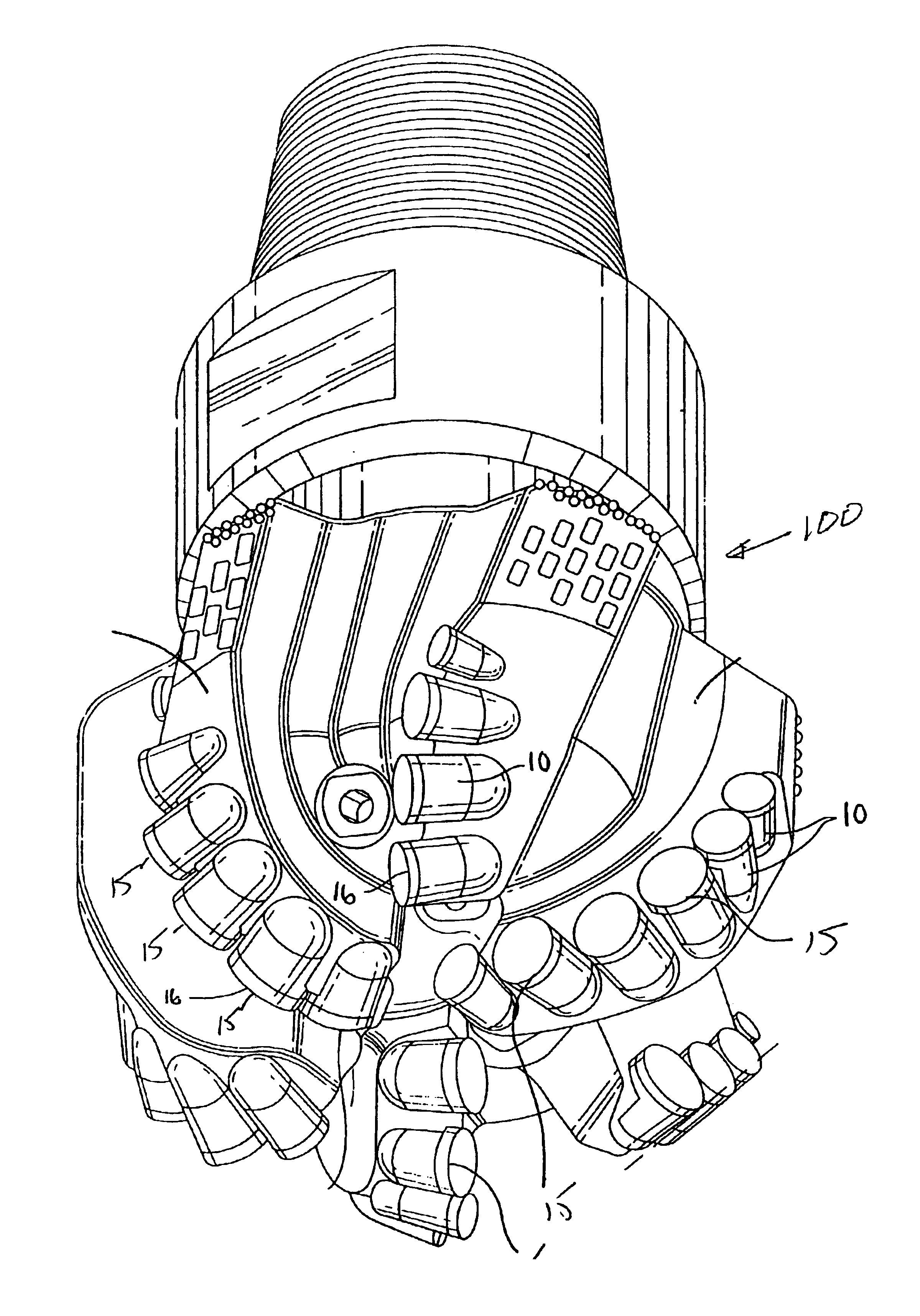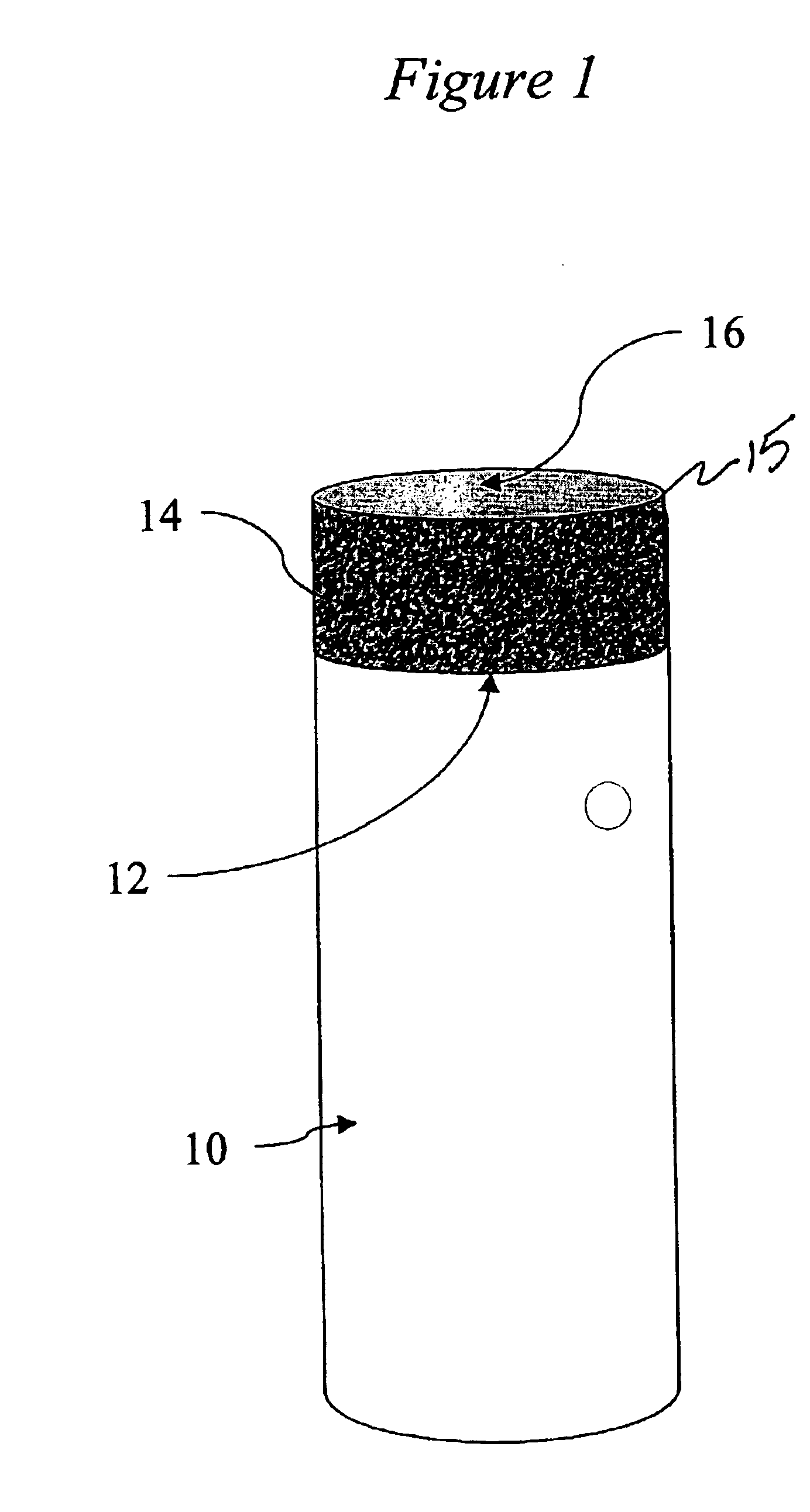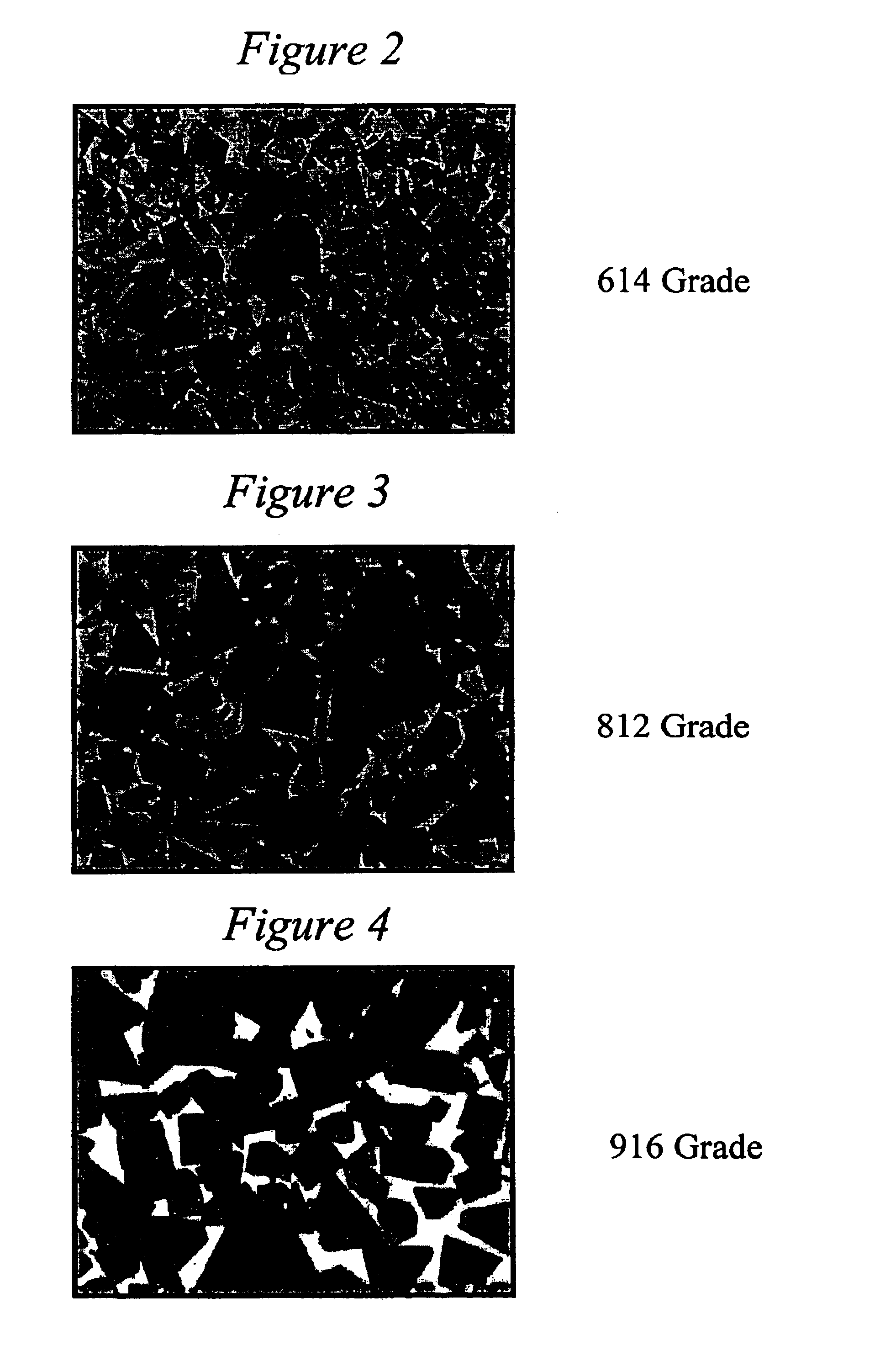Coarse carbide substrate cutting elements and method of forming the same
a technology of coarse carbide substrate and cutting element, which is applied in the direction of drags, mechanical machines/dredgers, applications, etc., can solve the problems and affecting the cutting effect of the cutting element, so as to achieve the effect of shortening the operating life of the cutting element and reducing the cost of production
- Summary
- Abstract
- Description
- Claims
- Application Information
AI Technical Summary
Benefits of technology
Problems solved by technology
Method used
Image
Examples
example 1
[0074]This example shows that a coarse grain grade carbide substrate has an improved thermal conductivity, i.e., higher than Kmin. Thermal conductivity may be measured by various methods conventional in the art. In this example, thermal conductivity is obtained by the flash method in accordance with the American Standard Testing Manual (“ASTM”) standard E 1461-92 for measuring thermal diffusivity of solids. Thermal conductivity is defined as the time rate of steady heat flow through a unit thickness of an infinite slab of a homogeneous material in a direction perpendicular to the surface, induced by a unit temperature difference. Thermal diffusivity of a solid material is equal to the thermal conductivity divided by the product of the density and specific heat. The specific heat of a WC / Co system can be measured by differential scanning calorimetry based on ASTM-E 1269-94 and is generally in the range of about 0.05 cal / gK for conventional carbide grades used in drag bit applications...
example 2
[0077]FIG. 10 provides a comparison of wear resistance data for the coarse grain substrates and conventional substrates. In this Figure the fracture toughness of the materials is plotted versus the wear number of the materials.
[0078]To evaluate the toughness of a carbide, the ASTM B771 test, which measures the fracture toughness (K1c) of cemented tungsten carbide material, was used. It has been found that the ASTM B771 test, correlates well with the insert breakage resistance in the field.
[0079]This test method involves application of an opening load to the mouth of a chevron-shaped slot formed in a short rod or short bar specimen. Load versus displacement across the slot at the specimen mouth is recorded autographically. As the load is increased, a crack initiates at the point of the chevron-shaped slot and slowly advances longitudinally, tending to split the specimen in half. The load goes through a smooth maximum when the width of the crack front is about one-third of the specime...
example 3
[0085]Palmquist toughness, in kg / mm, and hardness, in Ra, were measured and plotted in FIG. 11 for both coarse substrates and conventional carbide substrates. Two groups of specimens were prepared. One group consisted of specimens of the following conventional grades: 510, 512, and 614. The other group consisted of specimens of the following coarse grades: 712, 812, 814, 912, 914, and 916. As shown in FIG. 11, the coarse substrates showed improved Palmqvist toughness when compared to the standard substrate materials.
PUM
| Property | Measurement | Unit |
|---|---|---|
| particle size | aaaaa | aaaaa |
| median particle size | aaaaa | aaaaa |
| grain size | aaaaa | aaaaa |
Abstract
Description
Claims
Application Information
 Login to View More
Login to View More - R&D
- Intellectual Property
- Life Sciences
- Materials
- Tech Scout
- Unparalleled Data Quality
- Higher Quality Content
- 60% Fewer Hallucinations
Browse by: Latest US Patents, China's latest patents, Technical Efficacy Thesaurus, Application Domain, Technology Topic, Popular Technical Reports.
© 2025 PatSnap. All rights reserved.Legal|Privacy policy|Modern Slavery Act Transparency Statement|Sitemap|About US| Contact US: help@patsnap.com



